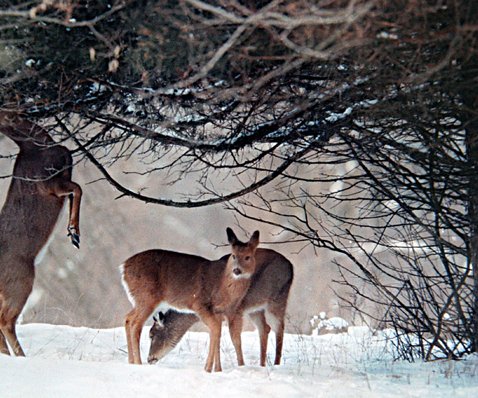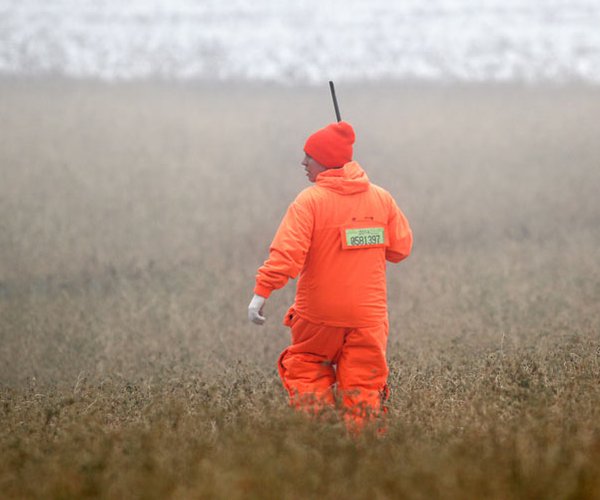Many hunters and nature enthusiasts do not understand some basics about chronic wasting disease (CWD), a deadly white-tailed deer disease, which showed up in Wisconsin two decades ago.
While the disease is somewhat off the radar, at times, we continue to get reminders of the immediate, and possible long-range, implications of CWD of deer, elk, moose and reindeer.
Preliminary registration numbers from the nearly complete deer seasons total 284,303 whitetails.
Samples submitted thus far totaled 15,894; 15,383 were processed, and 1,485 tested positive for CWD.
Be careful analyzing those numbers and the percent realized because the samples came statewide. The percent positives from Iowa County, for example, where CWD was first identified, are much, much higher. Extrapolating from sampling totals is touchy, too.
For example, there have been 67,736 deer registered from the Southern Farmland, 6,940 were analyzed for the disease and 1,393 tested positive, which leaves only 92 positives coming from the other three zones.
Submitting a sample and having it processed and returned to the hunter continues to be free. There are multiple ways to submit a sample, too. All of that was still easier and more thorough when in-person registration was available.
Now back to the disease, CWD. The cause is a malformed (shape) prion molecule. Prions are always present in deer, for example, and almost all of them are normal, correctly shaped, and function as intended. It is the bad ones that are the problem and cause the disease. Eventually the animal dies from the action of the bad prions changing good ones into the incorrect shape.
The take home is the cause of chronic wasting disease is not a fungus, not a bacterium, and not a virus such as the one that causes COVID-19. The spreading of CWD is not through the air like COVID-19 virus usually finds its host, us.
Bad prion molecules are cast off, shed in other words, by infected deer sometimes directly animal to animal by contacts. Prions are also left behind in saliva, urine, feces, and carcasses of dead deer. These prions have a long “life” as a molecule in soil, animal parts, and other objects in the environment.
This is why feeding deer, baiting deer, improper disposal of deer carcasses and confining live deer can be so problematic and deadly without extreme care, and yes, guidelines and even regulations.
Since 1997 the U.S. Centers for Disease Control and Prevention and the World Health Organization has recommended people do not eat meat from animals infected with CWD.
The disease has not been shown to be transmitted to humans, but similar diseases are found in other animals, including humans. It’s better to be safe than dead. Disease particles created variants; COVID-19 continues to do so.
If a hunter chooses not to have a deer tested, he should make sure others who enjoy the venison and sausage are aware. Better yet, do not share untested venison and surely no venison that has tested positive.
Now that the deer hunting seasons have about ended, antler searches are beginning. Many bucks have not dropped their antlers.
Before trout season opens, and turkey hunting, many other late winter and spring things begin. Now’s the time to learn a bit more about these diseases that can kill, now that time may be more available.
Rabbit, squirrel, hunting continue as does a limited deer hunting in some deer management units.
The early catch and release season for inland trout begins Jan. 6, 2024. The general hook and line season doesn’t begin until May 4, 2024. It is during that time some trout may be kept. Check the new Trout Fishing Regulations for specifics.
Wild turkeys are beginning to gobble at sunup. Hunting begins April 13-14 with a youth hunt, and April 17, 2024 with the first of six seven-day hunting periods.
Bald Eagles are refurbishing old nests and will begin laying eggs soon.
An active eagle nest will always have a parent incubating the egg or eggs but may be sitting low in the nest bowl making sighting nearly impossible.
During the warm December, some maple trees were leaking sap, leading some squirrels and birds to sip, lick and suck up the sweet fluid.
Evergreen conifers aren’t the only green plants growing among the brown forest duff. Ferns and fern allies, mosses and liverworts are out there as are a number of green invasive plants.
Use the slow season to learn more about what’s still out and about and things you don’t know about.
— Jerry Davis is an Argyle native and a freelance writer who lives in Barneveld. He can be reached at sivadjam@mhtc.net or at 608-924-1112.





